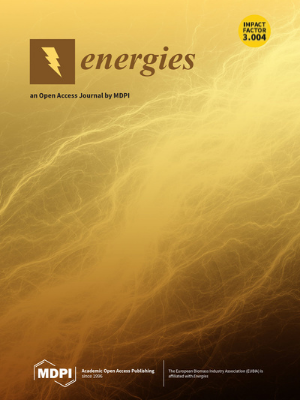A Review of Drive Cycles for Electrochemical Propulsion
IF 3.2
4区 工程技术
Q3 ENERGY & FUELS
引用次数: 0
Abstract
Automotive drive cycles have existed since the 1960s. They started as requirements as being solely used for emissions testing. During the past decade, they became popular with scientists and researchers in the testing of electrochemical vehicles and power devices. They help simulate realistic driving scenarios anywhere from system to component-level design. This paper aims to discuss the complete history of these drive cycles and their validity when used in an electrochemical propulsion scenario, namely with the use of proton exchange membrane fuel cells (PEMFC) and lithium-ion batteries. The differences between two categories of drive cycles, modal and transient, were compared; and further discussion was provided on why electrochemical vehicles need to be designed and engineered with transient drive cycles instead of modal. Road-going passenger vehicles are the main focus of this piece. Similarities and differences between aviation and marine drive cycles are briefly mentioned and compared and contrasted with road cycles. The construction of drive cycles and how they can be transformed into a ‘power cycle’ for electrochemical device sizing purposes for electrochemical vehicles are outlined; in addition, how one can use power cycles to size electrochemical vehicles of various vehicle architectures are suggested, with detailed explanations and comparisons of these architectures. A concern with using conventional drive cycles for electrochemical vehicles is that these types of vehicles behave differently compared to combustion-powered vehicles, due to the use of electrical motors rather than internal combustion engines, causing different vehicle behaviours and dynamics. The challenges, concerns, and validity of utilising ‘general use’ drive cycles for electrochemical purposes are discussed and critiqued.电化学推进系统驱动循环研究进展
自20世纪60年代以来,汽车驱动循环就存在了。它们一开始只是作为要求被单独用于排放测试。在过去的十年中,它们在电化学车辆和动力装置的测试中受到科学家和研究人员的欢迎。它们有助于模拟从系统到组件级设计的任何地方的真实驾驶场景。本文旨在讨论这些驱动循环的完整历史及其在电化学推进场景中的有效性,即使用质子交换膜燃料电池(PEMFC)和锂离子电池。比较了两类驱动循环(模态驱动循环和瞬态驱动循环)的差异;并进一步讨论了为什么电化学汽车需要用瞬态驱动循环而不是模态驱动循环来设计和制造。道路上的乘用车是这篇文章的主要焦点。简要介绍了航空和海洋驱动循环的异同,并与公路驱动循环进行了比较和对比。概述了驱动循环的结构以及如何将其转化为电化学车辆的电化学装置尺寸目的的“功率循环”;此外,还建议如何使用功率循环来确定各种车辆架构的电化学车辆的尺寸,并对这些架构进行了详细的解释和比较。对电化学车辆使用传统驱动循环的一个问题是,由于使用电动机而不是内燃机,这些类型的车辆与内燃机车辆相比表现不同,从而导致车辆的行为和动力学不同。挑战,关注和有效性利用“通用”驱动循环的电化学目的进行了讨论和批评。
本文章由计算机程序翻译,如有差异,请以英文原文为准。
求助全文
约1分钟内获得全文
求助全文
来源期刊

Energies
ENERGY & FUELS-
CiteScore
6.20
自引率
21.90%
发文量
8045
审稿时长
1.9 months
期刊介绍:
Energies (ISSN 1996-1073) is an open access journal of related scientific research, technology development and policy and management studies. It publishes reviews, regular research papers, and communications. Our aim is to encourage scientists to publish their experimental and theoretical results in as much detail as possible. There is no restriction on the length of the papers. The full experimental details must be provided so that the results can be reproduced.
 求助内容:
求助内容: 应助结果提醒方式:
应助结果提醒方式:


